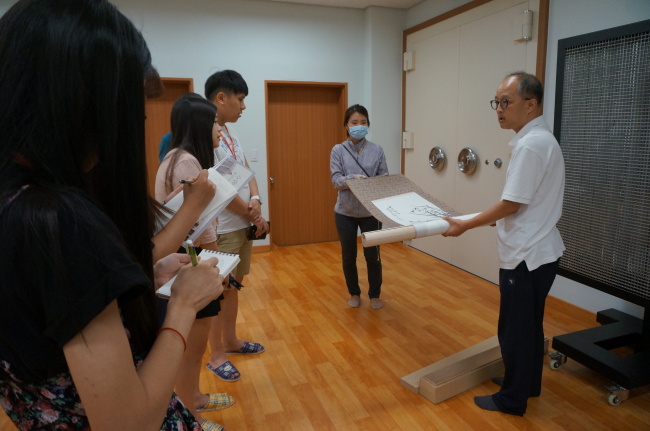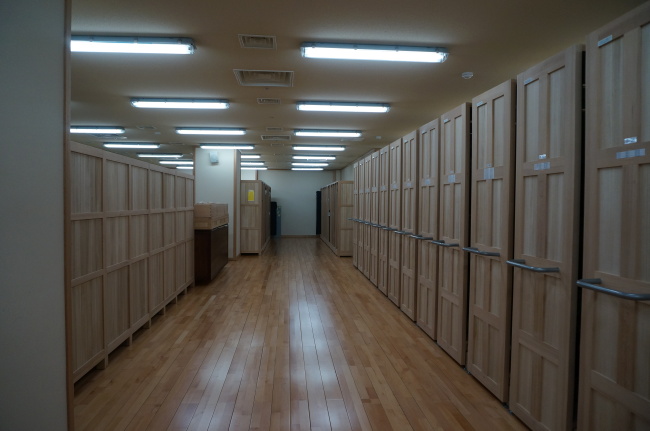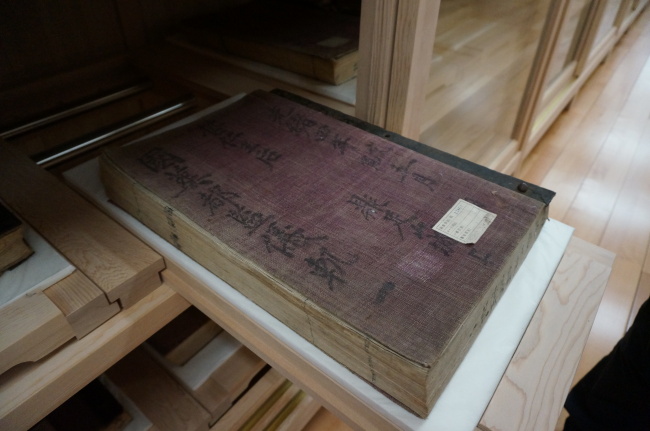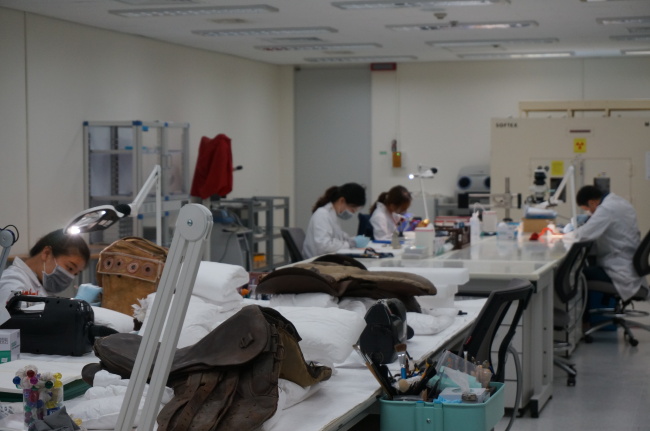Royal treasures kept deep underground
National Palace Museum of Korea opens its subterranean vault to the public
By Lee Woo-youngPublished : Aug. 23, 2016 - 15:33
Gyeongbokgung is an open museum without relics. Buildings in the palace are missing the furniture, tableware, books, paintings and clothes that used to make it a living space. Instead, these are kept in underground storages at the palace site as the prized collections of the National Palace Museum of Korea.
Some 45,000 royal artifacts are housed at the 18 museum underground collection vaults at two different locations within the palace grounds.
The artifacts -- including old documents, books, paintings, furniture, ceramics, metal ware and clothes -- are housed in storage vaults designed to offer the optimal environment.
Some 45,000 royal artifacts are housed at the 18 museum underground collection vaults at two different locations within the palace grounds.
The artifacts -- including old documents, books, paintings, furniture, ceramics, metal ware and clothes -- are housed in storage vaults designed to offer the optimal environment.

On Aug. 10, a storage vault was opened to a selected number of visitors who registered for the program prior to the museum’s seasonal museum storage tour. It is covered from floor to ceiling in foxglove wood and is equipped with radio-frequency identification tags that track every artifact in and out of storage.
“Museum storages are like the place in your house where you keep the most valuable items. They protect the prized museum collections and protect them using state-of-the-art technologies and techniques,” said Lee Sang-baek, the exhibition curator.

Temperature and humidity are controlled in the room, which is set at 20 degrees Celsius, with a variation of plus or minus four degrees, and 50-60 percent humidity. It houses paper items such as old documents, books and paintings, including the prized “Uigwe” books, which recorded the royal rituals of the Joseon era, and portraits of Joseon kings.
The 31-by-45-centimeter “Uigwe” books are placed on soft mattresses covered with hanji (mulberry paper) in wooden drawers, ensuring minimal contact with the wooden surface. Lights in this room prevent the colors from fading.

Many different materials are also used to safely wrap and store artifacts. Paintings are wrapped in hanji and cotton fabrics, and hung on moving vertical racks tightened with cotton strings to avoid any contact with the floor.
“Hanji is widely used to keep artifacts safe because it is acid-free with pH7,” said Seo Jun, the curator in charge of the museum collection storages, during the tour.
Hanji has many purposes in storage rooms. Embossed paper prevents the slightest movement of round objects on a surface and a bundle of hanji paper is used to prevent wrinkles on folded clothes.

Artifacts in poor condition are worked on in the conservation and science department of the museum. A total of 11 conservators work on assigned artifacts to restore them to their original condition while avoiding any damage.
One conservator has been working on a saddle for two years to clean and flatten out its wrinkled shape, mainly through the use of water mist, brushes and cotton swabs, with minimal chemicals used.
“I continue to apply moisture to the leather so that it becomes soft enough to be loosened and wait until traces of the wrinkles are gone,” said the conservator.
By Lee Woo-young (wylee@heraldcorp.com)


















![[Today’s K-pop] BTS pop-up event to come to Seoul](http://res.heraldm.com/phpwas/restmb_idxmake.php?idx=642&simg=/content/image/2024/04/17/20240417050734_0.jpg&u=)